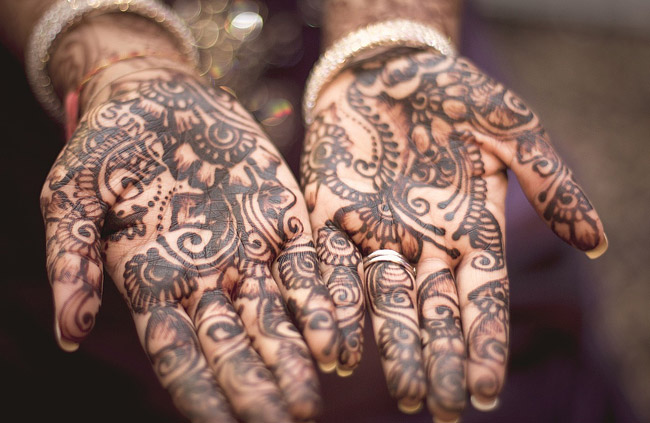
Fifty years ago, tattoos were the watermark of rebels and social outcasts—bikers, sailors, carnival freaks. But today, your average sorority girl probably has a unicorn on her ankle or a butterfly fluttering above her butt crack. Tattoos have been a part of the human experience since the Stone Age and were present in nearly every culture across the globe, from the ancient Greeks and Romans to Africans, Native Americans, and Polynesians. Below you will find 40 interesting facts about tattoos.
- In the U.S., more women than men are tattooed (23% vs. 19%), according to a 2012 survey.
- A 2006 survey revealed that 36% of those ages 18-25 and 40% of those ages 26-40 have at least one tattoo.
- The Latin word for “tattoo” is stigma.
- The National Geographic states that in April 2000, 15% of Americans (40 million people) were tattooed.
- There are over 20,000 tattoo parlors in the United States alone. A new establishment is being added in the country every day.
- Americans spend approximately $1.65 billion on tattoos annually
- An Oxygen Media survey in 2012 revealed that 59% of people with tattoos are women, with the most popular images being hearts and angels.
- A tattoo machine has four parts: 1) the needle, 2) the tube that holds the ink, 3) an electric motor, and 4) a foot pedal to control the movement (like a sewing machine pedal).
- Early tattoo methods included using chisels, rakes, or picks. Soot-covered thread was also used. The thread would be sewn through the skin.
- The word “tattoo” derives from the Polynesian word “ta” (“to strike”), which describes the sound of a tattooing spike being knocked on skin. The first recorded references to the word “tattoo” is in the papers of Joseph Banks (1743-1820), a naturalist aboard Captain Cook’s ship. Before Captain Cook brought the word to Europe, tattoos in the West were known as “prics” or “marks.”

- After the Lindbergh baby was kidnapped in 1932, many worried parents had their children tattooed.j
- Urine was sometimes used to mix tattoo color.
- Often misspelled “tatoo”, the word tattoo is one of the most misspelled words in the English language.
- Some of the funniest tattoo misspellings include “Beautiful Tradgedy”, “Tradgey/Comedy”, “Fuck the Systsem”, “Chi-tonw”, “I’m Awsome”, “Sweet Pee”, “Tomarrow Never Knows”, “Leave a coment below”, “Your Next”, “Exreme”, and “Eat & Drink Today Fore We Die Tomorrow”.
- Not all skin on the body is the same and, therefore, will not take tattoo pigment the same. For example, tattoos on elbows, knuckles, knees, and feet are infamous for fading.d
- The top 10 most popular spots for tattoos are 1) lower back, 2) wrist, 3) foot, 4) ankle, 5) armband, 6) back-piece, 7) arm, 8) chest, 9) breast, and 10) neck.
- Women are twice as likely to get their tattoos removed than men.
- After Social Security cards were issued in 1936, men and women tattooed their numbers on their arms.
- In 2013, just 24 hours after tattoo artist Rouslan Toumaniantz met his girlfriend Lesya in Moscow, he had, with her consent, tattooed an alternate spelling of his name all over her face. It runs cheek-to-cheek in gothic-style, five-inch, bold lettering.
- The first professional tattoo artist in the U.S. was a German immigrant, Martin Hildebrandt, who arrived in Boston in 1846.

- In 1955, the assistant secretary of defense suggested that citizens tattoo their blood type on their arms in case there was an attack against the U.S.
- To get a tattoo, the skin is pierced between 50 and 3,000 times a minute by a tattoo machine.
- A tattoo is actually in the dermis, which is the second layer of skin. The cells of the dermis are significantly more stable than the cells in the epidermis, with minor fading and dispersion for a person’s entire life.
- From the mid-1960s to late-1980s, the Soviet Union imprisoned as many as 35 million people in prison camps. Of that number, between 20 million and 30 million received tattoos while serving their time. Inmates caught wearing a tattoo they didn’t earn or deserve might be punished by death.
- The area where the color of a tattoo has lifted out during the healing or the artist missed a section is known as a “holiday.”
- Tattoo artist Vinnie Myers creates 3D nipple tattoos for breast cancer survivors.
- Modern ink may contain pigments from ground plastics, such as Acrylonitrile butadiene styrene (ABS), which creates extremely vivid tattooing with clearer, longer-lasting lines that are resistant to the fading and blurring of traditional inks.
- UV tattoos are created with ink that is completely invisible in normal daylight but glows brightly under ultraviolet light.
- A particularly famous tattoo was the naked hula girl who, positioned properly on a bicep, could swing her hips and jiggle her breasts as the owner moved his arm.
- The second most tattooed person in the world is Tom Leppard (1934) from the Isle of Sky, Scotland. Also known as the “Leopard Man,” his body is 99.9% covered in the tattoos. The only parts of his body not tattooed are between his toes and the insides of his ears.

- The most tattooed man in the world is Gregory Paul McLaren (1971), also known as Lucky Diamond Rich. He is 100% tattooed, including the inside of his foreskin, mouth, and ears.
- Laser surgery is the most effective way to remove a tattoo. The laser penetrates the skin and breaks up the tattoo pigments so that they can be carried away naturally by the body’s immune system. Black is the easiest color to remove because it absorbs more laser waves. Green and yellow are more difficult to remove.
- Some people have compared laser surgery to remove tattoos as little dots of hot grease being applied to the skin. Some treatments cost thousands of dollars. Other methods of tattoo removal include dermabrasion (sanding the skin), cryosurgery (freezing the skin), and excision (cutting away the tattoo with a scalpel and stitching up the wound). Traces of a tattoo almost always linger after tattoo “removal.”
- Some descendants of Holocaust survivors are having their concentration camp numbers tattooed on their arms to memorialize their family history.
- Tattooing was introduced at Auschwitz in the autumn of 1941 and at Birkenau the next March. These two camps were the only two camps to tattoo prisoners. Prisoners were tattooed on the chest and, more commonly, on the arms. Only those fit to work were tattooed.
- The oldest physical body in existence, the Iceman (3300-3200 B.C.) has the oldest tattoos that have ever been preserved. He has a black cross tattooed on the inside of his left knee, six straight lines on his lower back, and parallel lines on his ankles, leg, and wrists. When scientists X-rayed his body, they discovered joint disease under each tattoo, which suggests the tattoos were meant to relieve pain.
- Archeologists have discovered tools in France, Portugal, and Scandinavia that were probably used for tattooing. These are at least 12,000 years old, or from the time of the last Ice Age.
- The earliest known tattoo that represents something other than an abstract pattern is of the god Bes, the Egyptian god of revelry. These tattoos have been found on female Nubian mummies dating from 400 B.C.
- The Greeks learned tattooing from the Persians and used tattoos to mark slaves and criminals so they could be identified if they tried to escape. The Romans learned it from the Greeks and would tattoo “fug” on the foreheads of slaves for “fugitive.”
- Stone sculptures in China from the 3rd century B.C. depict men wearing tattoos on their faces. A few hundred years later, the philosopher Confucius discouraged tattooing because he believed that the human body was a gift from one’s parents and ancestors.





Leave a Reply